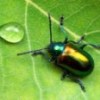Blog posts are long, thin things.
One could, for example, use a blog to post a high-resolution map of Chile. Or a single strand of spagetti. Any image up to 500 pixels wide, for as long as it goes. In that vein, here's a Cephalotes varians turtle ant:

Just wait until I find a stick insect.

Stunning
That's one thick myrmicine.
Absolutely stunning image Alex! Wow is all I can say!
Beautiful. The forelegs seem neatly tucked under her chin, as if she were praying. Is this how you get them to stand still?
I, for one, am eager to see that future stick insect. Or maybe a good, long caterpillar.
Wow! What a fantastic image. I can see how a stick insect would really work in this format. I'm looking forward to that.
Great idea, Alex - and the lighting is beautiful...